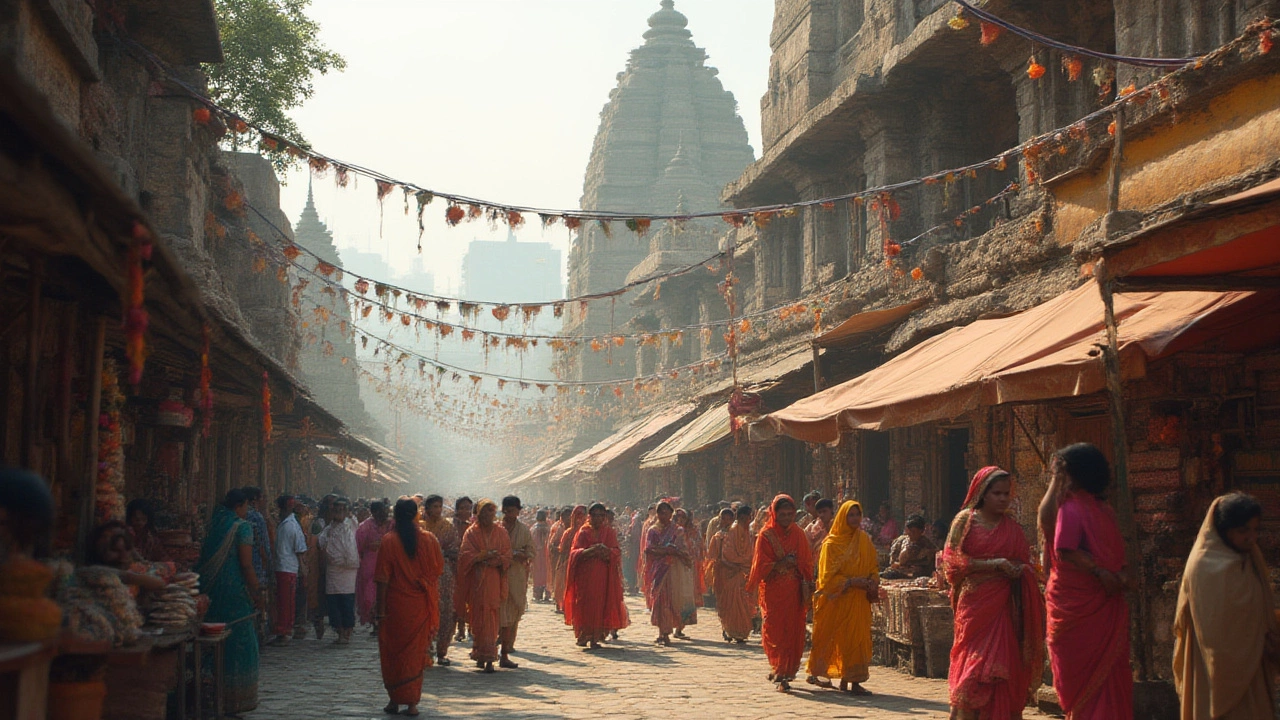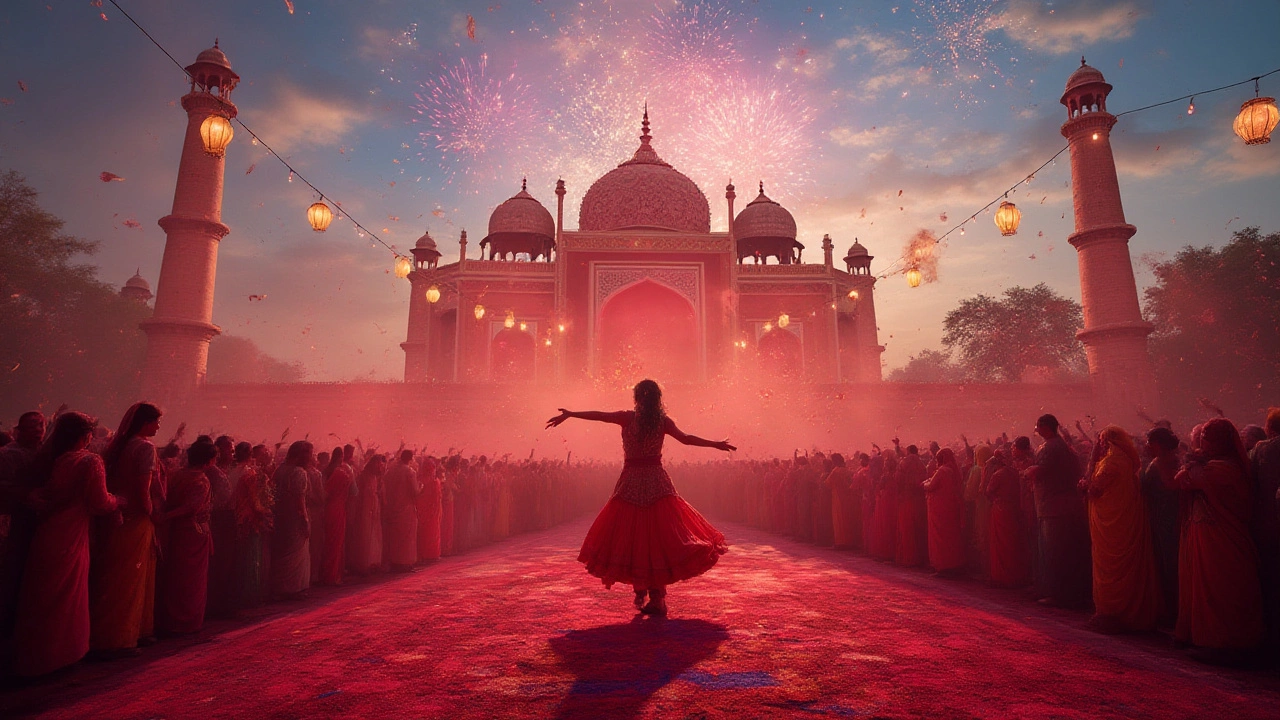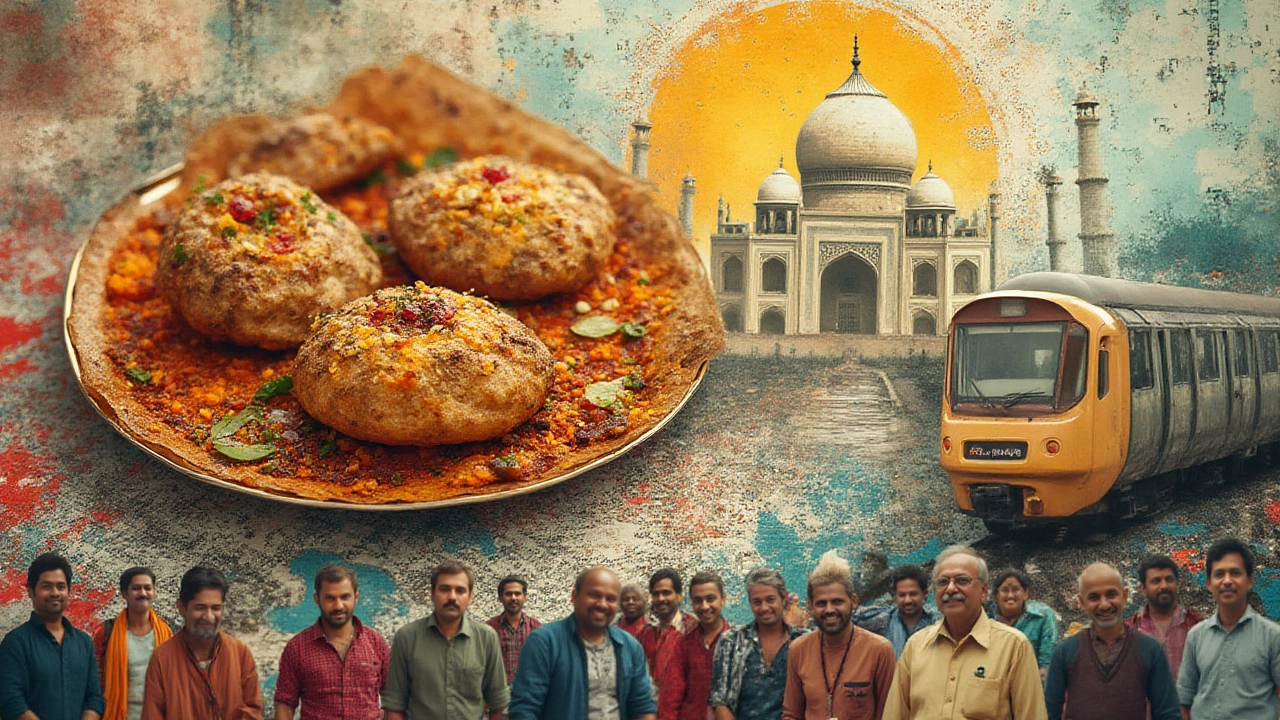Short Note About India: Wonders, Culture, And Incredible Facts

Every time someone says “India,” a crazy mash of colors, sounds, and flavors just pops up in your head. You don’t even need to close your eyes—one second you’re thinking about the Taj Mahal, the next you’re drooling over a spicy plate of chaat, or maybe you’re stuck in traffic on a street overflowing with rickshaws, cows, and luxury cars. India is huge, sure, and it’s full of contradictions. But that’s not a bad thing. It’s what makes this country so wild and interesting.
India’s Living History: Monuments, Legends, and Mystery
Taj Mahal is always the poster child—the “monument to love” they say, built by Mughal emperor Shah Jahan for his favorite wife, Mumtaz. But have you ever heard locals joke that even the best marriages in India don’t get gifts half as grand? Taj isn’t just about romance, though. It’s guarded by legends, secret rooms, and that perfect white marble glow at sunrise—tourists line up just for that Insta-perfect shot.
But India’s history goes deeper—think older than most countries. Varanasi is said to be around 3,500 years old, where the ghats along the Ganges don’t sleep. Sadhus, street food sellers, funeral pyres, and foreigners sit side by side every evening as bells and chanting echo across the river. Down south, you’ve got the mysterious temples of Hampi, and the lost city of Dwarka—which, some folks swear, actually sank into the sea. Mohenjo-Daro and Harappa, once bustling before most world civilizations existed, remind everyone that South Asia was writing stories long before Shakespeare or Napoleon.
Did you know, India is home to more than 40 UNESCO World Heritage Sites? These aren’t just pretty buildings, but living reminders of the country’s tangled history with empires, traders, warriors, monks, and dreamers. You’ll see intricate carvings at Khajuraho (wait, are those PG-13 sculptures?), the golden spires at Amritsar’s Harmandir Sahib, and Portuguese vibes in Goa’s churches. It’s not just history, it’s real-life magic—just look at stepwells like Rani ki Vav in Gujarat, where the stairs create this geometric wonderland underground. Real people use them just like 800 years ago.
If you’re into mystery, India’s bursting with it too. There’s the cursed village of Kuldhara outside Jaisalmer, apparently abandoned overnight by hundreds of families, with locals refusing to set foot there after dark. Or the magnetic hill in Ladakh, which messes with your senses because your car looks like it’s rolling uphill. Even in a world obsessed with science, India sneaks in a bit of the unknown through astrology charts, palm readers in Chennai alleys, and tales about ghosts in the Royal Fort of Bhangarh. Fact or fiction, these stories give India an edge that no guidebook will capture.
And yes, the British came, plundered, and left the railways behind. But these steel tracks, now running more than 67,000 kilometers, are no joke. Every day, 23 million people take Indian trains—that’s like moving the entire population of Australia daily, with all the chaos, chai, and arguments thrown in. And here’s a thought: India isn’t stuck in the past. You’ll find cutting-edge startups in Bangalore rubbing shoulders with 2,000-year-old mosques. This blend is what keeps the country’s story alive, fresh, and absolutely unpredictable.

People, Languages, and That Thing Called ‘Unity in Diversity’
Imagine walking down a street in Mumbai in the morning, being greeted in Marathi, picking up breakfast from a Tamil shop, and bumping into Gujaratis discussing business—all within ten minutes. That’s India. The country has over 1.4 billion people, making it the most populous in the world as of 2023. Here’s the real kicker: not all these folks even speak the same language at home.
India officially recognizes 22 languages—and the total? Over 19,500 spoken dialects! Hindi is spoken by a chunk of the population, sure, but try speaking Hindi in Chennai or Kolkata and you might only get blank stares. Down south, it’s Tamil, Telugu, Kannada, Malayalam, and a language pride that’s fierce. In Bengal, nothing beats the melancholy of Rabindra Sangeet, while in the Northeast, a mosaic of tongues like Manipuri, Khasi or Mizo fills the air. English acts as this handy bridge, especially in offices and schools, but even then, “Indian English” has its own swag—try asking for “timepass” or navigating “prepone,” and you’ll see how local flavor creeps in.
Ever heard an Indian wedding described as a “riot of color”? That’s still underselling it. From the wild baraat of North India (dancing uncles, anyone?) to the serene rituals on the sands of Kerala, these 3-day (often more!) affairs show how the country’s diversity isn’t just on paper. Even food—one state’s dosa is another’s paratha; dessert could mean jalebi in Delhi or payasam in Tamil Nadu. Street food somewhere in Old Delhi might send your taste buds into orbit, while a Goan fish curry or Bengali mishti will leave you drooling for more. If you want authenticity, skip those touristy hotels and follow the crowd to a busy road-side stall. No menu, but the smells alone will tell you what’s good.
Let’s not pretend India is a poster child for perfect unity, though. There are protests, arguments, and sometimes even straight-up fights between states about water, language, or cricket. Regional identity runs deep—you’ll spot “Bihari pride,” “Tamil culture first,” or “Punjabi by blood” stickers everywhere. Somehow, these differences sit (mostly) side-by-side with big festivals like Diwali, Eid, Christmas, Pongal, Holi, and more being celebrated across religions and backgrounds every year.
One weird but awesome thing: Religion is everywhere, yet so is atheism. You’re just as likely to run into a temple priest blessing commuters at a train station as you are to find diehard rationalists holding meet-ups in Kerala coffee shops. And despite the news showing heated debates and drama, the vast chunk of India gets on with life, plays chess at the local park, or helps out a neighbor during tough times. India’s “unity in diversity” isn’t a cliché here—it’s part of daily survival.
The rapid rise of social media has shaken things up. You’ll spot Instagram influencers filming temple visits, stand-up comedians roasting politicians, and a new generation that’s proud to mix the best of India with the rest of the world. Bollywood and cricket, though, remain the common glue—if you can sneak in references to Virat Kohli’s sixes or dance steps from “Naatu Naatu,” you’re basically guaranteed to make friends anywhere you go.
Here’s a quick tip: If you want to strike up a conversation, just talk about mango season (which state grows the best ones?). Or argue about street food rankings. You’ll soon find yourself being pulled into the wild, never-ending debate that is daily life here.

Modern India: Innovation, Challenges, and A New Generation’s Dream
People often say India is a land of contradictions—and here, that’s absolutely true. For every ancient festival, you’ll see teenagers with iPhones, binging on BTS or K-pop, and scrolling memes between their chemistry homework and cricket practice. India’s economy has shot up to the world’s 5th largest, and the country’s space agency, ISRO, shot the pink Chandrayaan-3 rover onto the moon in 2023. You read that right—moon missions from a country where people also climb palm trees to get coconuts for breakfast. That’s how India operates: both low-tech and sci-fi, often on the same street.
Indian cities are exploding. New metros, airports, and skyscrapers rise every year—Noida, Hyderabad, Pune, and Bangalore are now swarming with techies coding for Silicon Valley startups or building unicorn companies like Flipkart, Ola, Byju’s, and Zomato. India’s talent pool keeps surprising the world; just look at how many global CEOs—from Microsoft’s Satya Nadella to Google’s Sundar Pichai—grew up in simple Indian homes. Yet, go a few miles out, and you’ll see villages where kids walk for miles to reach school and hand-dug wells are common. This gap—between “India Shining” and “Bharat”—remains a real challenge. But that’s not stopping the country’s new generation from hustling. India now produces the largest number of STEM graduates annually, and a young population (average age around 28) is ready to take on the world.
Problems? Tons. Traffic that never ends, pollution that makes some days blur into gray, power cuts, and sometimes even angry street cows. India’s democracy is loud and messy—parliament arguments often go viral, and local elections can be as intense as the World Cup final. Still, the country’s voting rate is one of the highest anywhere, and you’ll see long lines of first-time voters, old women in colorful saris, and tech bros all waiting together to press that purple-ink button.
Education is seen as the golden ticket here. Coaching centers are a bigger business than McDonald’s, and every parent dreams of their kid acing the IIT entrance. But slowly, more people are chasing careers in sports, music, design, and entrepreneurship. Social media has given new voices a shot—activists, influencers, and “EDM desi” DJs can gain a million followers overnight. Gender and caste issues haven’t magically disappeared, but social entrepreneurs are shaking things up, and more Indian women are working and traveling solo than ever before.
Here’s a quirky fact: India is the world’s biggest democracy, and also, by a mile, the world’s biggest producer and consumer of spices. No matter where you go, someone has an opinion on biryani—Hyderabadi or Kolkata style? Try both, trust me. Each state, town, and even street is plotting its own future, while still sticking to roots—sometimes sweet, often spicy.
Want to experience real Indian life? Skip the luxury hotels and book a homestay in the mountains of Himachal or Sundarbans mangrove forest. Learn to bargain at local markets (be ready for a grin and a head-wobble), take a bumpy bus ride through Rajasthan, or volunteer with an NGO in rural Odisha. India isn’t easy, and it won’t fit any stereotype you bring. That’s what makes it unforgettable. Pack light—but bring curiosity and patience. The stories you take back won’t ever match the ones you expected.